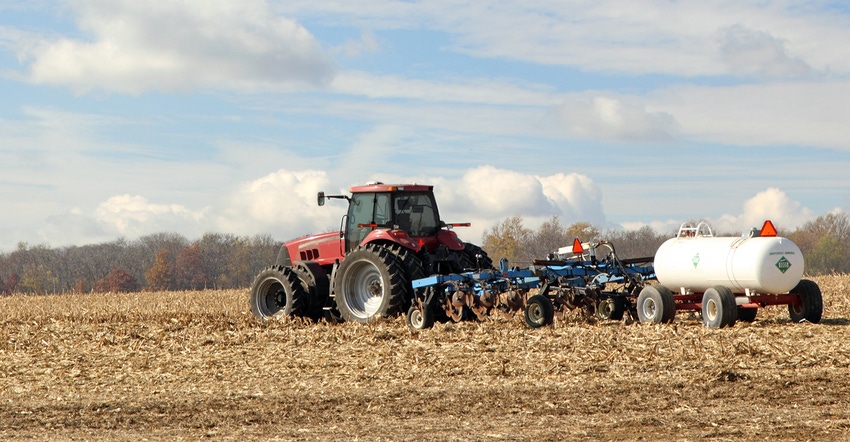
This 2022 crop year has been a doozy. We’ve seen a drought in the western-corn-belt greatly impact the national corn yield, while some in the east have had a great year after Mother Nature blessed them in abundance.
While cash for most is assumed to be in good supply due to high commodity prices, inputs are high-priced as well. Some big decisions are being made, such as how much fertilizer to apply and more importantly, how do I protect myself when laying out so much money for the 2023 crop?
First, let’s be honest about the 2022 crop year. Overall, farmers made good money. While in some situations, insurance won’t bridge the gap, looking at $6-$7.50 Dec22 corn opportunities for so long in this past year has provided most with great opportunities to lock in solid income.
Will we see similar profit opportunities next year? Should you be more aggressive in protecting future profit potential?
Fertilizer prices then and now
As we look at DAP and Potash applications this fall, prices remain robust. Two falls ago our operation decided to apply 300/300, and the cost to us (applied) was running $110 per acre! We had dry fertilizer as cheap as we’d seen it in several years – that’s why we ‘went heavy’. This fall, our quote to apply 250/250 was $225/acre!
While I locked in my Anhydrous Ammonia at $1,150 per ton in August, current prices locally are $1,450 per ton. Obviously, things have changed.
Heck, last fall when we prepaid our fertilizer, we were able to lock in our N, P & K program using 250/250 and 200 pounds of actual N at $290 per acre. Currently, a person paying spot prices for fertilizer would be paying around $375-400 per acre for the same program.
With these prices you may be tempted to cut back on fertilizer rates. But with ample cash in hand, I believe many producers are staying with a similar program as what they’ve used in years past.
Projecting profits
That gets us to the dilemma at hand. IF we’re paying big prices for inputs, we’re likely making that decision based on the fact Dec23 corn is trading in the $6.25 range. If we look at a producer with a 200 APH and an average land cost of $250 per acre, paying $400 per acre for fertilizer would put a producer with otherwise typical costs at a break-even of $5.40 per bu. corn.
Hedging at $6.25 looks pretty solid versus this break-even. But what if the market plummets?
You might believe there are lots of reasons to think it won’t plummet. However, how many times have we had similar thoughts, and then the following year were wishing we’d managed some risk?
Too many to count is the best answer I can come up with.
Two strategies to follow
My advice as you begin planning for 2023? Don’t skimp on inputs if you can at all avoid it. Given current price levels, we can lock in excellent income even paying these high fertilizer prices. Bushels pay the bills, and when we skimp on inputs, often-times the bushels don’t show up the following year.
Second, protect what you’re paying for. IF you pay for high-priced fertilizer with the thought $6+ corn is a given, it’s not a given unless you make it a given. How do you do that? Write an HTA or two, buy some puts. Manage your risk in some way, shape or form. Here are some examples.
I like either having a March short-dated put in place, which protects me until essentially the end of February when we will know the spring insurance price. That strategy is cheap but protects me until I know more about what insurance will be able to guarantee me.
Another strategy I like is buying a Dec23 put at the market, selling one a dollar below the market and selling a call at least a dollar above the market. As I write this, a $6.20/5.20 put spread versus a $7.50 call costs around 18 cents. This strategy keeps you above $6 basis the board but allows you to participate up to $7.50 minus the cost of the trade.
These strategies keep you profitable in the event the bottom falls out of the price of corn. Again, please make no big assumptions as to what will happen in 2023. Anything can happen, so manage your risk accordingly whether you’re buying inputs or selling corn.
Be careful during harvest. Take a break here and there if at all possible.
Feel free to reach out to me or anyone on the AgMarket team. We’d love to hear from you.
Reach Matt Bennett at 815-665-0462 or [email protected].
The risk of loss in trading futures and/or options is substantial and each investor and/or trader must consider whether this is a suitable investment. AgMarket.Net is the Farm Division of John Stewart and Associates (JSA) based out of St Joe, MO and all futures and options trades are cleared through ADMIS in Chicago IL. This material has been prepared by an agent of JSA or a third party and is, or is in the nature of, a solicitation. By accepting this communication, you agree that you are an experienced user of the futures markets, capable of making independent trading decisions, and agree that you are not, and will not, rely solely on this communication in making trading decisions. Past performance, whether actual or indicated by simulated historical tests of strategies, is not indicative of future results. Trading information and advice is based on information taken from 3rd party sources that are believed to be reliable. We do not guarantee that such information is accurate or complete and it should not be relied upon as such. Trading advice reflects our good faith judgment at a specific time and is subject to change without notice. There is no guarantee that the advice we give will result in profitable trades. The services provided by JSA may not be available in all jurisdictions. It is possible that the country in which you are a resident prohibits us from opening and maintaining an account for you.
The opinions of the author are not necessarily those of Farm Futures or Farm Progress.
About the Author(s)
You May Also Like






